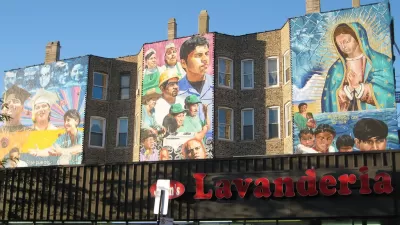A Harvard study suggests that since 2000, the number of Americans living in racially integrated neighborhoods has risen. But this may be a temporary effect of gentrification, and integration remains an exception to the rule.

Reporting on their research brief for the Harvard Joint Center for Housing Studies, study authors Shannon Rieger and Jonathan Spader discuss a rise in integrated neighborhoods since the year 2000.
The study looks at two measures of neighborhood integration: 1) tracts "where no racial or ethnic group accounts for 50 percent or more of the population," and 2) tracts where "any community of color makes up at least 20 percent of the tract population AND if the tract is at least 20 percent white." Both measures suggest increased integration from 2000 through the time period of the 2011-2015 American Community Survey.
Ongoing gentrification may be behind this in some places, rather than long-term integration. Spader and Rieger write, "While some of these neighborhoods may become stably integrated areas, it is not yet clear how many of the newly integrated neighborhoods will become stably integrated and how many will eventually become non-integrated areas." In addition, the majority of Americans still live in neighborhoods that fulfill neither definition of integration.
FULL STORY: Are Integrated Neighborhoods Becoming More Common in the United States?

Trump Administration Could Effectively End Housing Voucher Program
Federal officials are eyeing major cuts to the Section 8 program that helps millions of low-income households pay rent.

Planetizen Federal Action Tracker
A weekly monitor of how Trump’s orders and actions are impacting planners and planning in America.

Ken Jennings Launches Transit Web Series
The Jeopardy champ wants you to ride public transit.

California Invests Additional $5M in Electric School Buses
The state wants to electrify all of its school bus fleets by 2035.

Austin Launches $2M Homelessness Prevention Fund
A new grant program from the city’s Homeless Strategy Office will fund rental assistance and supportive services.

Alabama School Forestry Initiative Brings Trees to Schoolyards
Trees can improve physical and mental health for students and commnity members.
Urban Design for Planners 1: Software Tools
This six-course series explores essential urban design concepts using open source software and equips planners with the tools they need to participate fully in the urban design process.
Planning for Universal Design
Learn the tools for implementing Universal Design in planning regulations.
Ada County Highway District
Clanton & Associates, Inc.
Jessamine County Fiscal Court
Institute for Housing and Urban Development Studies (IHS)
City of Grandview
Harvard GSD Executive Education
Toledo-Lucas County Plan Commissions
Salt Lake City
NYU Wagner Graduate School of Public Service





























